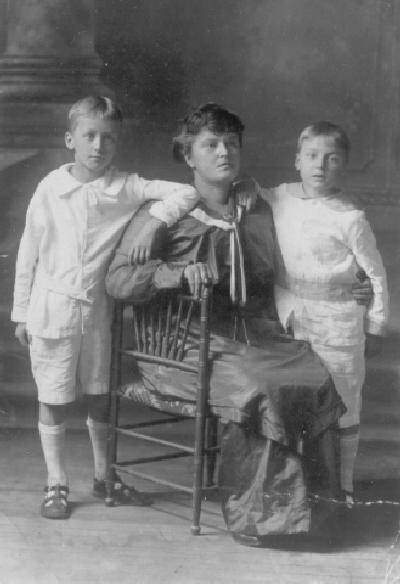
Closed-toe Sandals: Gender Trends

Figure 1.--This portrait is unidentified. We believe the boys were American and were photographed about 1920. At the times sandals like this were worn y both boys and girls, although they were most commom with affluent families. Gradually closed-toe sandals began tgo be seen as a girls' style.
|
Gender patterns are difficult to discuss generally as they vary so widely from country to country and over time. They were commonly worn by boys and girls for school and play in England from about the 1930s through the 1950s. Even older boys of 12 or 13 would commonly wear them. This was also true in many European countries. In America the closed-toe sandal might be worn by younger boys, espeially boys from affluent families, but was generally seen as a girl's shoe. We think conventions in Canada were similar. Different styles of closed-toe sandals
may have had gender connotations. We note what we think may be a Canadian family about 1920. The girls wear double-bar sandals and the boys single bar sandals. We do not, however, notice any consistently held over time or among countries fixing a style of sandals with a definitive gender image. They were common in Gernmany until the 1930s when the NAZIs discouraged boys from wearing them.
HBC

Navigate the Boys' Historical Clothing Sandal Pages:
[Return to Main closed-toe sandal page]
[Return to Main national sandal page]
[Return to Main shoe page]
[Return to Main English footwear page]
Navigate the Boys' Historical Clothing Web Site:
[Introduction]
[Activities]
[Biographies]
[Chronology]
[Cloth and textiles]
[Clothing styles]
[Countries]
[Topics]
[Bibliographies]
[Contributions]
[FAQs]
[Glossaries]
[Images]
[Satellite sites]
[Tools]
[Boys' Clothing Home]
Created: 3:59 AM 11/8/2006
Last updated: 3:59 AM 11/8/2006



